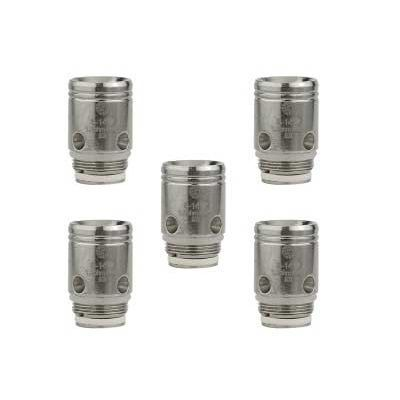
More vapers are getting comfortable with flavor blending, which allows them to get creative while exploring a wider range of tasty flavor profiles than ever before. Flavor blending is an easier alternative to DIY vaping, which involves making e-liquid from scratch.
But once in a while, vapers find that their flavor blends simply don’t vape very well. In more cases than not, this has to do with the coils that you’re using.
What is Flavor Blending?
Flavor blending is simply the act of mixing two or more prepared e-liquids together. Basically, if you have multiple e-juice flavors that you love, you blend them together to see what type of flavor profile you end up with. Let’s say that you have a delicious strawberry-flavored e-juice from one company, and a vanilla custard flavor from another. So, you take an empty e-juice bottle and mix them together to end up with a glorious strawberry and vanilla custard that’s sweet, fruity, rich and creamy all at the same time.
Flavor blending is often used as an alternative to DIY vaping, as we said earlier. DIY vaping requires the use of special equipment, and requires adequate storage, as well as an appreciation for mathematical formulas. Not everyone has the means to pull off this type of operation, and so flavor blending is the way to go. Further, flavor blending produces a lower chance of error, as you’re simply mixing together two e-juices that were already prepared with the right proportions of ingredients.
Why Do the Coils Matter?
So, what does flavor blending have to do with coils? Well, as lot more than you may think. The coil that we use when we vape is constantly making contact with e-juice. The e-juice is sent through the coil into the wicking material, and it’s the e-liquid absorbed into that wicking material that gives us each hit of vapor when we fire the device.
Further, we know that different coil configurations work best with specific types of e-liquid. For one thing, we know that sub-ohm coils are more compatible with high VG vape juices, due to the way in which these coils can easily vaporize e-liquids that have a thicker consistency.
So, when you make a new flavor blend, you should check for a few different factors before settling on the coil that’s best for the task at hand. Let’s discuss those factors further.
Factor #1: Sweetness Level
Something that you need to pay attention to is the sweetness level of your e-liquid. For example, mixing together two extremely sweet flavors will leave you with an e-juice that’s highly sugary. We know that the more sugary your e-liquid is, the more likely it is that your coils will develop a film of gunk caused by the repetitive burning of the sugars in the formula against the heat of the coil.
Factor #2 VG/PG Mix
Another factor to pay attention to is the VG/PG level. When you’re combining two different e-liquids together, you may not be paying attention to the VG/PG level of each e-liquid. But, what you’ll end up with is a combination of the two. To determine the new VG/PG ratio of your flavor blend, you’ll need to do some math based on the combination of the two ratios together, as well as the ratio of each vape juice in the blend. Then, choose a coil that’s compatible with this ratio.
Factor #3: Nicotine Level
Finally, pay attention to the nicotine level in your new flavor blend. Higher nic vape juices may be more suitable for higher-ohm coils with lower wattages. This is because higher outputs and sub-ohm coils can cause high amounts of freebase nicotine to become harsh, which can irritate the throat.
Having the Right Coil Really Can Make a Difference
Flavor blending is a very gratifying hobby for fans of delicious e-liquids, and it doesn’t require much knowledge or experience in order to end up with a successful batch of yummy vapes. But bear in mind that if you’re going to go this route, you need to take into account various factors that relate to your coils. Without the right coils, you may find that your vapes are extremely disappointing, or you may end up with coils that are gunked up beyond repair.
